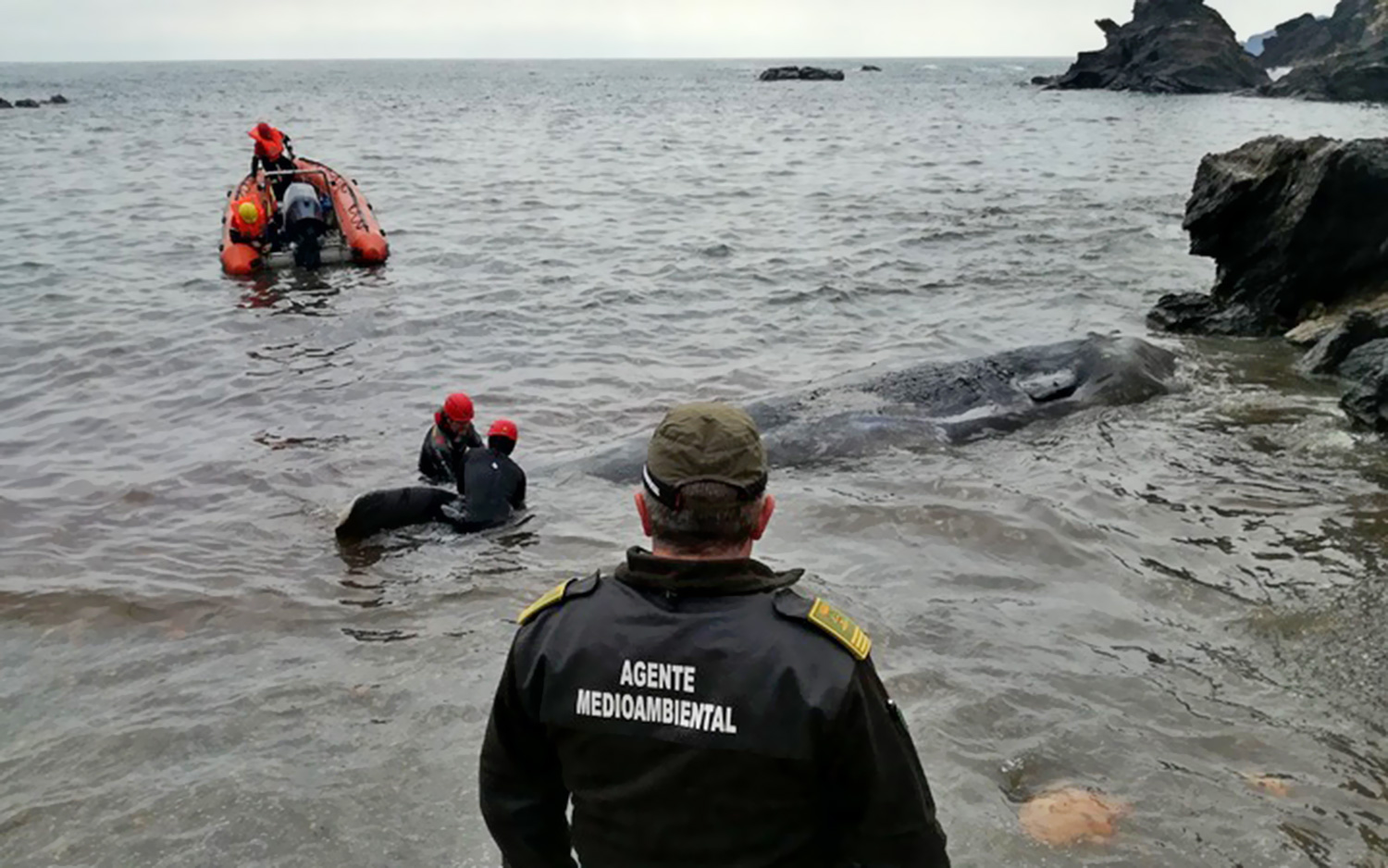65 Pounds of Plastic Trash Tore This Whale Apart from the Inside
A young male sperm whale washed up dead on the southeastern coast of Spain in February, and now scientists know what killed the animal.
During a recent necropsy, investigators discovered nearly 65 lbs. (29 kilograms) of plastic trash crammed into the dead whale's stomach and intestines, including dozens of plastic bags, chunks of mangled rope and glass, a large water container and several "sacks of raffia [a fiber derived from palm trees]," local authorities reported. A Twitter photo shared by a regional nature conservation agency shows the whale's stomach contents in grim detail.
The 33-foot-long (10 meters) whale was found dead on the beach at Cabo de Palos, near Murcia, Spain, on Feb. 27. Researchers at El Valle Wildlife Recovery Center performed the autopsy and determined that the whale likely died from a form of abdominal infection called peritonitis. The whale simply could not expel the vast amount of plastic it swallowed, the researchers said, causing the mammal's digestive system to become lethally impacted or infected. [Whale Album: Giants of the Deep]
This news provides another vivid example of the staggering amount of plastic waste humans are dumping into the world's oceans.
Scientists estimate that there are about 5 trillion pieces of plastic in the ocean now and millions of tons of additional trash being added every year. According to a recent study in the journal Scientific Reports, there are more than 87,000 tons (79,000 metric tons)of plastic floating just in the Great Pacific Garbage Patch — a drifting trash heap with an area three times the size of France — which equates to about 250 pieces of refuse for every person on the planet.

This debris finds its way not only into large mammals like whales but also into birds, fish, sea turtles and even the deepest-dwelling crustaceans in the Mariana Trench.
Officials in Murcia are using the whale's sad story to launch an ocean plastic awareness campaign, which will include 11 beach-cleaning events and 19 public talks and forums.
Get the world’s most fascinating discoveries delivered straight to your inbox.
“The presence of plastics in seas and oceans is one of the greatest threats to the conservation of wildlife throughout the world," Consuelo Rosauro, director-general of the natural environment for the Murcian government, said in a statement (translated from Spanish). "The Region of Murcia is no stranger to this problem that we must tackle through clean-up actions and, above all, awareness of citizens."
Originally published on Live Science.

Brandon is the space/physics editor at Live Science. His writing has appeared in The Washington Post, Reader's Digest, CBS.com, the Richard Dawkins Foundation website and other outlets. He holds a bachelor's degree in creative writing from the University of Arizona, with minors in journalism and media arts. He enjoys writing most about space, geoscience and the mysteries of the universe.
